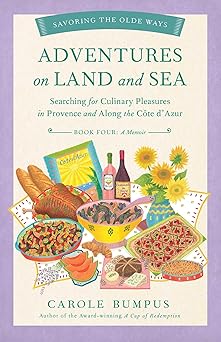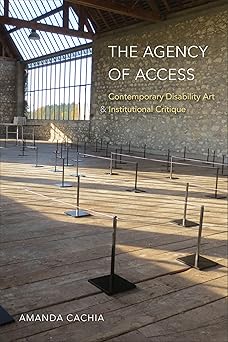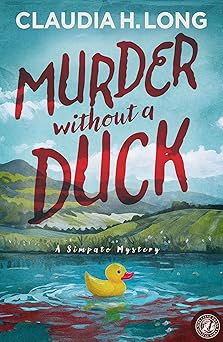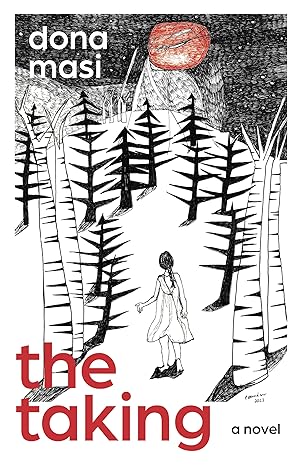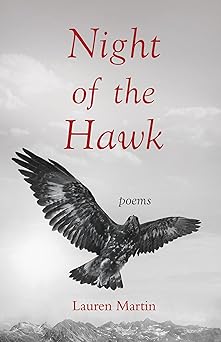A Tale of Two Celtic Queens: Boudica and Cartimandua
By Melanie Karsak

Bronze Boudica statue against summer sky in London, UK. This statue was commissioned in the 19th Century by Queen Victoria, and represents Boudica, or Boadicea, queen of the Celtic Iceni tribe.
Standing proudly in her chariot, her daughters at her side, the statue of a defiant Queen Boudica stands with a spear in her hand as she faces the Parliament buildings along the River Thames. It has been almost two thousand years since the real Boudica rolled her chariot into Roman Londinium and burned the Roman city to the ground. Her name forever emblazoned as a rebel and freedom fighter, Boudica is remembered in the histories as a tragic heroine.
While Boudica’s name, although sometimes spelled Boudicca or Boudicea, is familiar to many, the name of one of Boudica’s contemporary queens is not. Queen Cartimandua is the first recorded queen in English history. She ruled the Brigantes tribe in northern England and southern Scotland with great political aplomb. She led her people through the Roman occupation, keeping her tribe intact and saving her crown, until her ex-husband betrayed her. Yet, her name is largely forgotten in history. Historians have painted Boudica as the wronged wife and mother who bravely led her people to reclaim their freedom. Cartimandua, when she is remembered, is maligned as an adulteress and seductress.
But who were these two great Celtic queens, really? What were their lives like? What personal difficulties did they face? What gods did they worship? Who did they love? My Celtic Rebels series, which features the life of Queen Boudica, and my Eagles and Crows series, exploring the life of Queen Cartimandua, seeks to answer these questions.
In my Celtic Rebels series, I dive into the history of Boudica and weave a picture of her life in greater detail. My trilogy begins when Boudica is just a young princess of the Northern Iceni tribe. This chapter of Boudica’s life delves deeply into Celtic myth and mystery. Exploring the roles of the druids and the worship of the Celtic gods, including the dark goddess Andraste, who has been recorded as the patron goddess of Boudica. Boudica is a young woman in touch with the ancient ways, and the unwitting student of a cantankerous former priestess who is determined to find a path forward in the darkness ahead.
 The Romans have not yet arrived in my novel Queen of Oak, but the Celtic tribes boil with trouble. To Boudica’s south, the Catuvellauni tribe is warring with their neighbors and seeking support from the Northern and Greater Iceni. The tribes, so embroiled in their own turmoil, don’t see the Roman-shaped freight train about to hit them.
The Romans have not yet arrived in my novel Queen of Oak, but the Celtic tribes boil with trouble. To Boudica’s south, the Catuvellauni tribe is warring with their neighbors and seeking support from the Northern and Greater Iceni. The tribes, so embroiled in their own turmoil, don’t see the Roman-shaped freight train about to hit them.
Using the excuse that they had come to help ousted Celtic client kings restore lands taken by the Catuvellauni, the Romans invaded in AD 43. Amid all this chaos, Boudica weds King Prasutagus of the Greater Iceni, uniting the Iceni tribes. Boudica, Prasutagus, and their two daughters move forward in what becomes a political game of chess. Boudica and Prasutagus try to play Rome’s games, doing everything to keep their people safe. However, disaster strikes when Prasutagus dies unexpectedly, leaving behind his wife and daughters.
When Boudica seeks to protect her rightful claim as ruler of the Iceni in the wake of her husband’s death, history records catastrophe. Boudica is beaten, and her daughters are assaulted. These tragic events, along with years of building frustration and bitterness over Roman abuse, spark a rebellion. Boudica unites the eastern tribes and brings fire to the Romans, destroying Roman cities and settlements, including Londinium. The scorch marks from Boudica’s fire can be seen on the remains of the ancient walls of London today. While Boudica’s fight for freedom is honorable, it ends in tragedy. The Iceni Queen is defeated. No one is certain what happens to her after the infamous Battle of Watling Street, where the Romans, although heavily outnumbered, manage to destroy a massive Celtic army.
Roman writers say Boudica was either killed in the fighting or drank hemlock rather than be taken prisoner. My series gives her a more noble end. No one will ever know the real ending of Boudica’s story. Still, she will always be remembered as a fierce woman who fought back against Roman oppression and very nearly won. I was honored to bring Boudica to life in my Celtic Rebels series.
To Boudica’s north, Queen Cartimandua of the Brigantes was playing her own game. In an effort that would impress George R. R. Martin’s Cersei Lannister, Cartimandua wisely watches the failed efforts of her southern neighbors and plays her own “Game of Thrones.” Not much is known about Cartimandua and how she kept her tribe safe from the Romans. What is recorded, however, is that the Brigantes Queen played a solid hand, keeping her tribe independent and uninvolved in the strife to her south. Cartimandua’s good relations with the Romans enabled her to call upon them when she faced rebellion within her own tribe.
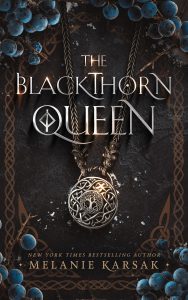 In my series, Eagles and Crows, I depict Cartimandua as a wise queen who inherits her throne from her mother. She has been groomed to take the crown since childhood and carries a deep sense of responsibility to her people: Brigantes first, everything else is second. The Brigantes tribe was a collection of smaller tribes united under the Brigantes. The first three novels in my Eagles and Crows series show how Cartimandua manages to lock down control on her unwieldy tribe through war and guile before the arrival of Rome. When Rome arrived, Cartimandua was fully in control of the largest Celtic tribe in the north. She becomes the dam between the southern warring tribes and the wild tribes of the Scottish Caledonian Confederacy to her north. As such, Cartimandua keeps her head and crown far longer than the Iceni queen.
In my series, Eagles and Crows, I depict Cartimandua as a wise queen who inherits her throne from her mother. She has been groomed to take the crown since childhood and carries a deep sense of responsibility to her people: Brigantes first, everything else is second. The Brigantes tribe was a collection of smaller tribes united under the Brigantes. The first three novels in my Eagles and Crows series show how Cartimandua manages to lock down control on her unwieldy tribe through war and guile before the arrival of Rome. When Rome arrived, Cartimandua was fully in control of the largest Celtic tribe in the north. She becomes the dam between the southern warring tribes and the wild tribes of the Scottish Caledonian Confederacy to her north. As such, Cartimandua keeps her head and crown far longer than the Iceni queen.
While those are the facts of Cartimandua’s life, the details are fuzzy. In my series, I explore the woman behind the history. The Brigantes people were a tribe that worshipped the goddesses Brigantia and the Cailleach, twin goddesses who each ruled part of the year. The Brigantes’ lands also host many prehistoric sites and henges, such as the massive Thornborough Henges, featured as important religious sites in my novels. My series explores Cartimandua’s worship of the twin goddesses and depicts the priestesses who honored these ancient gods. We also take a more human look at the events of Cartimandua’s personal life.
Roman writers record that Queen Cartimandua married Venutius, a Carvetti chieftain, who she later divorced. Roman writer Tacitus blames the split on Cartimandua’s affair with Venutius’s armor-bearer, Vellocatus. However, the Roman writer neglects to mention that Cartimandua and Venutius were divorced for many years before Cartimandua and Vellocatus married. The Romans manage to assign blame for Venutius’ rebellion and attempted coup on his ex-wife to Cartimandua’s lusty, cheating ways. In my novel, I explore the personal relationships between Cartimandua, Venutius, and Vellocatus more deeply, painting a picture of a more human woman who loved and was betrayed.
History records that in the end, Venutius wins the Brigantes away from Cartimandua. The Brigantes queen is rescued from a final assault on her crown by the Romans and disappears into history. Venutius’s rule proves very short. In just a few year’s time, the Brigantes fall to Rome…and the rest is history.
Cartimandua is the first recorded English queen who was maligned by Roman writers. Boudica is forever remembered as a wronged woman and fierce rebel. But both women were so much more. Writing the Celtic Rebels and Eagles and Crows series has allowed me to breath life into these fascinating women, their friends, family, and even beloved pets. Part history, part fiction, my novels explore what their lives might have been like, creating a complete picture of their worlds. I hope you will join me on a trip to ancient England and explore the lives of Boudica and Cartimandua.
You can find the Celtic Rebels series, detailing the life of Queen Boudica, on Amazon: https://www.amazon.com/dp/B093LH9MZP
Read more about Queen Cartimandua in the Eagles and Crows series, available on Amazon: https://www.amazon.com/dp/B0C6V5967J
About the Author:
 New York Times and USA Today bestselling historical fantasy author Melanie Karsak is the author of The Celtic Blood Series, The Road to Valhalla Series, and other works of fantasy and science fiction. The author currently lives in Florida with her husband and two children.
New York Times and USA Today bestselling historical fantasy author Melanie Karsak is the author of The Celtic Blood Series, The Road to Valhalla Series, and other works of fantasy and science fiction. The author currently lives in Florida with her husband and two children.
Facebook: https://www.facebook.com/AuthorMelanieKarsak/
Instagram: https://www.instagram.com/karsakmelanie/
Tiktok: https://www.tiktok.com/@authormelaniekarsak
Threads: https://www.threads.net/@karsakmelanie
Bookbub: https://www.bookbub.com/authors/melanie-karsak
Amazon: https://www.amazon.com/stores/Melanie-Karsak/author/B009DKGKQG
Newsletter (get a free book!): https://www.subscribepage.com/sheildmaidens
Category: Contemporary Women Writers, On Writing






